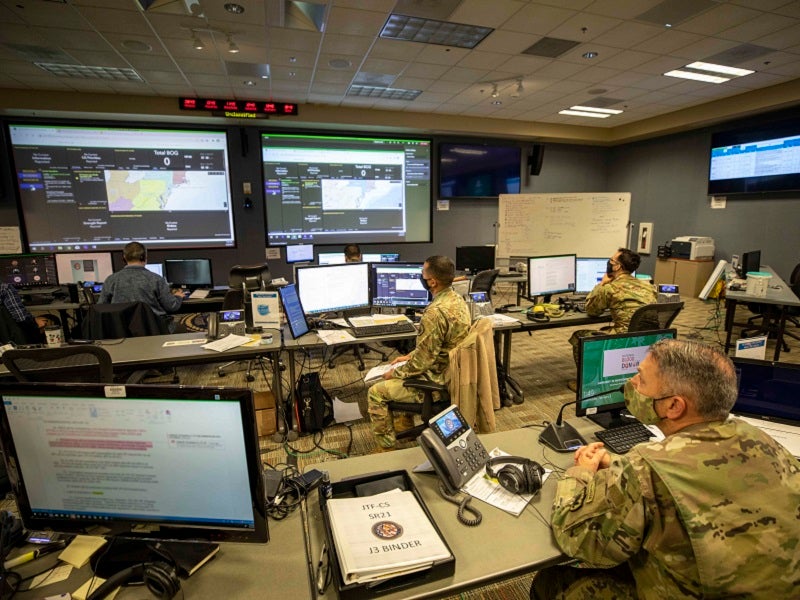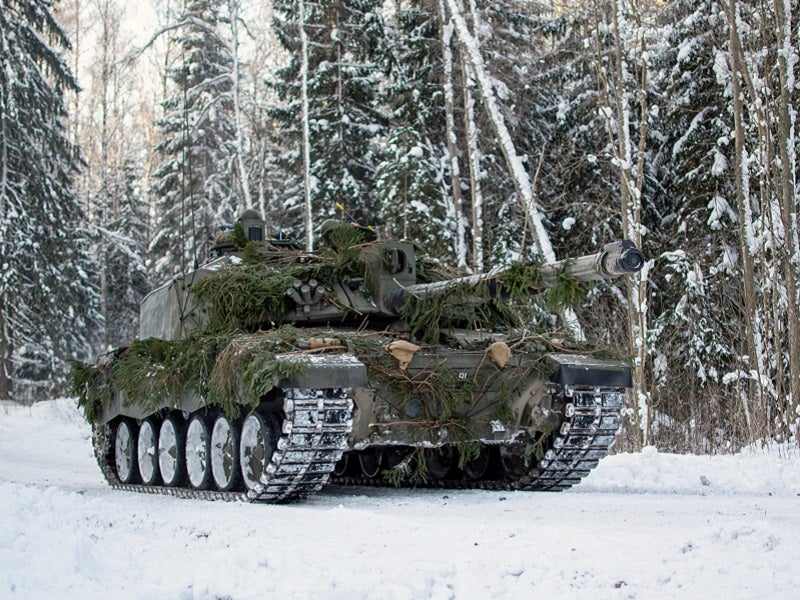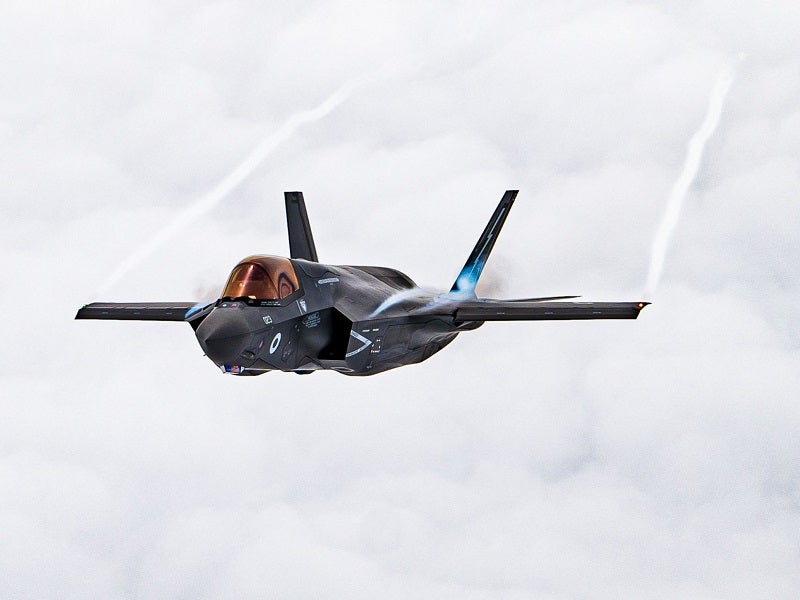
Since the end of the Cold War, most armed forces have reduced in size, meaning they must do more with less. The US is focusing on multi-domain operations (MDO) – best thought of as a new way of conducting operations – through its Joint All Domain Command and Control (JADC2) programme (the technical means through which MDO will be achieved), as the means to addressing its lack of mass whilst ensuring it can win in a peer conflict.
The US is striving to achieve integration between all of its services, from land to space, in a bid to shorten its decision-making cycles and improve its target collect functions, although the rest of NATO has made only limited approaches toward this goal. Achieving integration in three key areas could be central to deterring Russia.
The ‘Iron Mountain’
NATO’s deterrence posture in Europe has been thrown into sharp relief by the war in Ukraine. Despite the apparent shambolic approach of Russia’s intelligence-led operation, and in the face of fierce Ukrainian resistance, Russian forces managed to advance onto Kyiv and have seized a considerable area of land in the east and south, which – including Crimea – places 20% of Ukraine’s territory under Russian occupation. Maps circulating on social media indicate that this area would be greater than Switzerland and Austria combined.
For NATO this is problematic, as until 24 February its deterrence posture had been understood as deterrence by punishment. Put simply, the Enhanced Forward Presence in Estonia was regarded as a tripwire force, sufficient to put up a fight in the event of an invasion and trigger an Article 5 response, but not significant enough to win the first battle. It was accepted that the Russians would initially be successful, but that they would lose to NATO on aggregate and occupied territory would be retaken with time.
However, if the advances following 24 February had not already made clear the risks of this approach, the events that occurred at Bucha and Mariupol made them explicit. In addition, Russia is understood to have deported as many as 1.6 million Ukrainian citizens to Russia, according to the US State Department, and reports of war crimes are widespread.
How well do you really know your competitors?
Access the most comprehensive Company Profiles on the market, powered by GlobalData. Save hours of research. Gain competitive edge.

Thank you!
Your download email will arrive shortly
Not ready to buy yet? Download a free sample
We are confident about the unique quality of our Company Profiles. However, we want you to make the most beneficial decision for your business, so we offer a free sample that you can download by submitting the below form
By GlobalDataThe stakes of allowing Russian forces to advance are therefore clear, and no longer acceptable. This has driven a revision in NATO’s force posture to one of deterrence by denial. The NATO response force will now dramatically increase from 40,000 soldiers at high readiness to 300,000. As an initial step, the alliance has doubled the number of multinational battlegroups in eastern Europe to eight.
These elements drive the denial element of deterrence. They make it clear that NATO will defend ‘every inch’ of territory, thereby denying the Kremlin a rapid victory. At the same time, NATO forces must make it clear that they are capable of defeating the Russian military.

It will also be critical to ensure that NATO’s ground forces are able to coordinate their actions and share as much data as possible in real time. Doing so will maximise the availability and lethality of NATO’s artillery, which is typically outnumbered by its Russian equivalents, and may have less ammunition available than would be ideal. This will require integration between international ground forces, which may be complicated in many cases as legacy platforms present multiple integration challenges.
However, if successfully realised – even on a limited scale – the ability of a NATO force to respond rapidly to an evolving invasion would be increased by greater situational awareness.
Massed aerospace attack
From Russian articles and the country’s procurement priorities, it is apparent that Russian planners have a preoccupation with NATO’s long-range precision strike capabilities, which Russian authors refer to as a ‘massed aerospace attack’. The concern is that Russia may be knocked out of a war in the opening phases by catastrophic damage inflicted upon its critical national infrastructure (CNI) and armed forces. This drives the development and procurement of layered air defence systems and long-range strike assets capable of inflicting damage on the infrastructure necessary to sustain such strikes.
It stands to reason that were NATO to focus its integration efforts on assets that could be used to facilitate a massed aerospace attack, this would communicate an effective message of deterrence to Russia. This would require the development and introduction into service of real time targeting links between airborne ISR and strikes assets such as the F-35 Lightning, ground-based strike systems such as the MLRS or HIMARS, and naval systems with long-range cruise missiles.
If possible, these strikes could be coordinated with electronic warfare and cyber effects to degrade and defeat Russia’s layered air defence networks and CNI. Achieving this in real time, as opposed to through the current planning cycles, and communicating the capability through exercises and press releases would make clear to Russia that it would be subjected to a massed aerospace attack that would be more coordinated and resilient than any before it.

SODCIT
Prior to 24 February, the Russian military had written extensively about how it would seek to conduct the opening phase of a war. It refers to a mechanism that translates to a “strategic operation for the destruction of critically important enemy targets (SODCIT)”.
According to a group of researchers from the CNA think tank, a SODCIT would be designed to prevent escalation by inflicting damage against critical national infrastructure which, in the event that it was unsuccessful, would introduce friction into a coalition by targeting critical nodes and eroding the will to fight. The researchers add that it would notionally be focused on military infrastructure and forces, as well as civilian buildings that are essential for a comfortable way of life.
Russia has demonstrated its ability to deploy massed cruise and ballistic missile strikes coordinated with cyber and other kinetic actions in Ukraine. Whilst the campaign to destroy Ukraine’s infrastructure has not achieved the level of paralysis that Russian planners might have hoped, it has demonstrated Russia’s ability to deliver those strikes, and indicates that a SODCIT would be a potential risk in the event of a confrontation with NATO.
It stands to reason therefore, that a key area in which NATO forces should seek multi-domain integration is air defence at the strategic level.
The consolidation of Europe’s defence manufacturers for example, could mean there are points of fragility in NATO’s ability to wage a conflict lasting more than a few months. Therefore, protecting that infrastructure with integrated air defence would add credibility to NATO’s deterrence posture and help to win the first battle should one occur.
It would also help to prevent fragmentation of the alliance. Success would require willingness from every NATO country, it is possible that kinetic strikes against some will lessen the will to fight as opposed to strengthening it. Demonstrating that this approach is unlikely to succeed could potentially undermine the levers that Russia has available to coerce NATO states.
Bringing it all together
As the US continues down its path to MDO, NATO countries will be faced with a choice: should they follow suit, and attempt to bring integration to their entire force, along with all of the costs that would incur? Or should they seek more limited goals and attempt to achieve integration within their force where it might be most useful?
In either case, future procurement programmes will have to take a careful approach to requirements setting and ensure that the data architectures are in place to support integration at the appropriate level.







